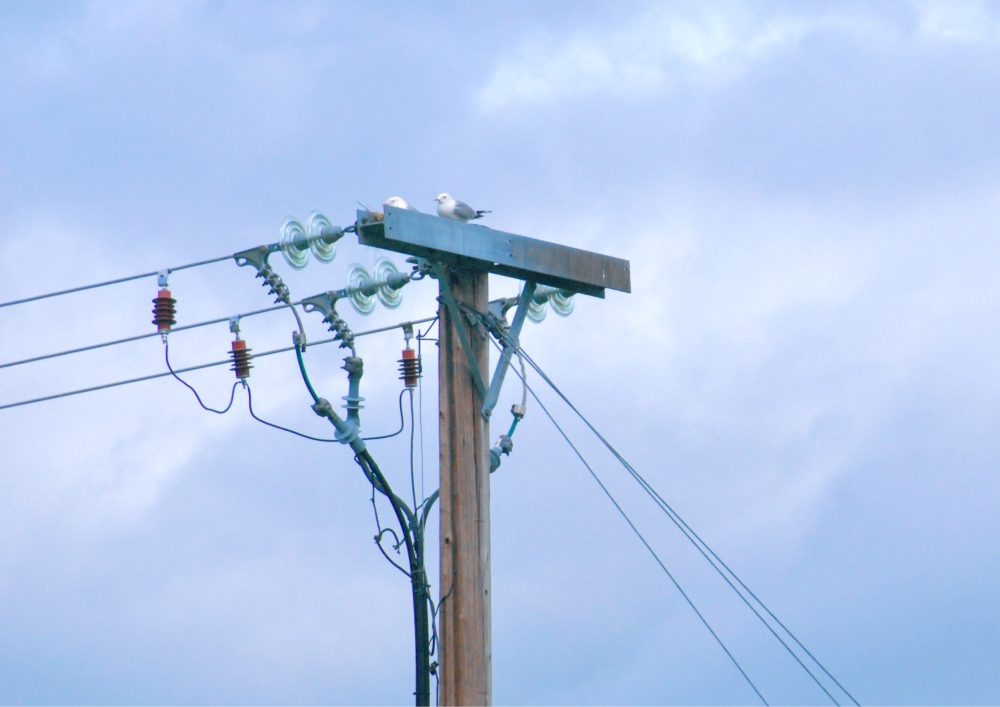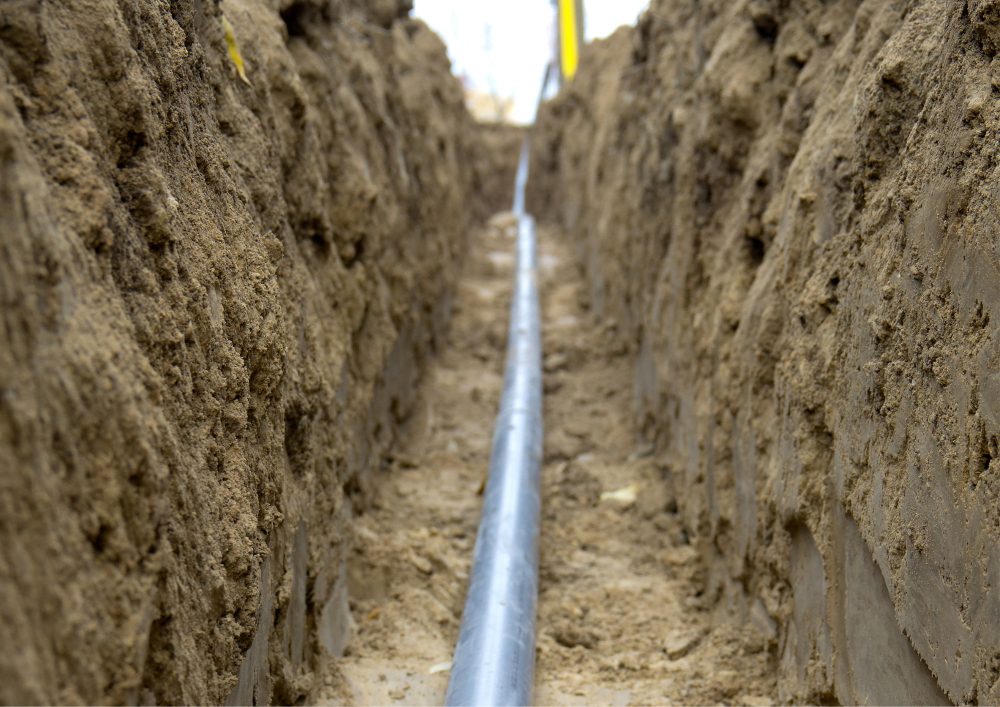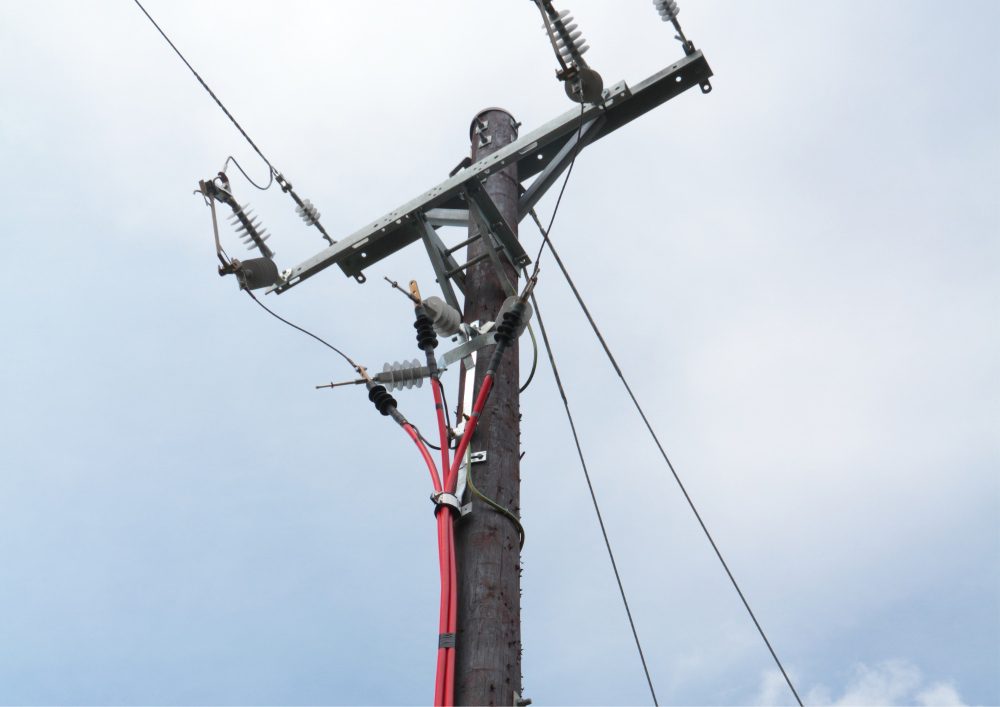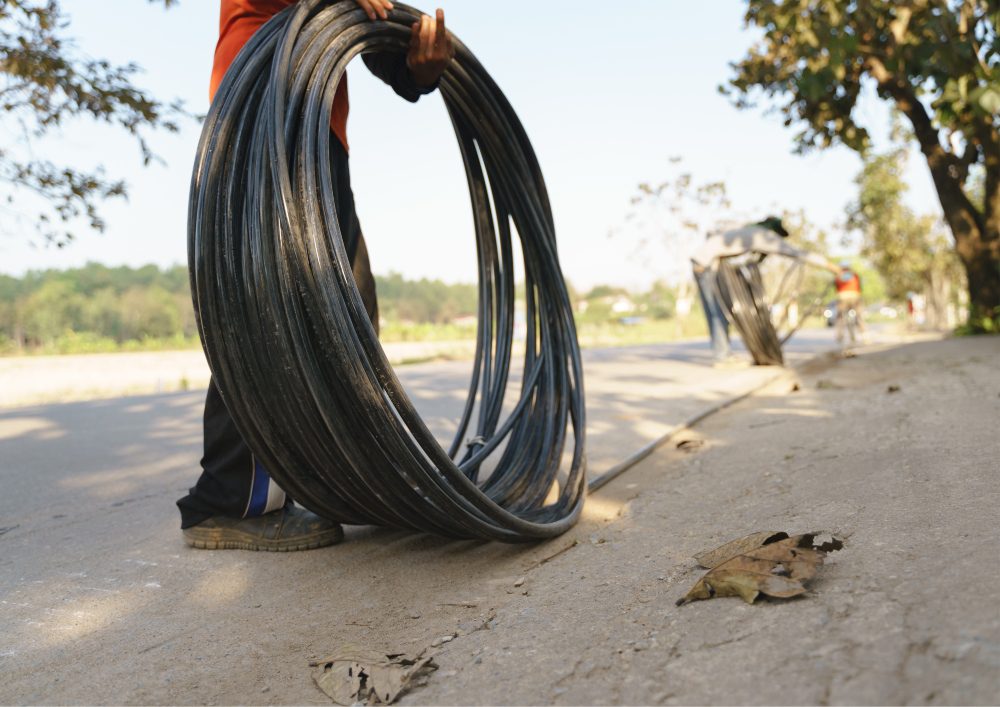Last Updated on June 6, 2024 by teamobn

Electricity, akin to a steadfast companion, often escapes our full appreciation. It’s as simple as flicking a switch, and suddenly, the room is bathed in light, appliances buzz with activity, and our electronic devices receive the energy they so eagerly seek. But have you ever ventured into the fascinating journey of this enigmatic energy as it travels to your humble dwelling or busy workplace?
The electrical grid is like a superhero team, and power lines are their secret weapon, transporting electricity right to your doorstep. But, not all power lines are created equal. Brace yourself for the ultimate showdown between the underground champs and the overhead heroes.
In this article, explore the advantages and disadvantages of each option, helping you make an informed choice that suits your needs.
Contents
Underground vs. Overhead Power Lines – Pros and Cons

You stroll past power lines, oblivious to their existence. But, the decision between burying them underground or letting them roam the skies like electric tightrope walkers can have a massive effect on your precious property, your hard-earned budget, and even the lovely environment. Embark on an epic journey, unearthing the truth and finding the perfect power line path just for you!
The Aesthetic Appeal
Aesthetic considerations are often the first thing that comes to mind when discussing power lines. Their visibility can significantly affect the look of your property and the surrounding area. Take a look at how each option fares in this regard.
Underground Power Lines
Underground power lines are buried beneath the surface, hidden from view. This makes them a popular choice for those who prioritise aesthetics. They don’t obstruct your view and blend seamlessly into the environment. However, the initial installation cost is higher, as it involves trenching and burial.
Overhead Power Lines
Overhead power lines are the most common type, strung high above the ground on utility poles. These unattractive structures often excel at marring the beautiful view just beyond your window, disrupting the flawless allure of your property.
Additionally, they are susceptible to perilous confrontations with the forces of nature, inviting harm from falling tree branches and fierce gusts of wind, potentially plunging you into darkness.
If preserving the visual charm of your property is a top priority, then underground power lines are the ideal choice. These marvels effortlessly banish the eyesores of utility poles and cables. It is just quintessential to prepare for an elevated upfront investment.
Reliability and Durability
With regard to their reliability and durability, various factors come into play. Examine how overhead and underground lines differ in this aspect.
Underground Power Lines
Underground power lines are sheltered from most external elements, making them less susceptible to weather-related disruptions. They are typically more reliable and require less maintenance. However, in the event of a fault or damage, locating and repairing underground lines can be more time-consuming and costly.
Overhead Power Lines
Overhead power lines are exposed to the elements, which makes them susceptible to various weather-related issues. Storms, high winds, falling trees, and even birds can cause power outages by damaging the lines. While utilities often maintain overhead lines regularly, they remain more vulnerable to external factors.
If uninterrupted power supply and minimal maintenance are high on your priority list, underground lines might be the better choice. They provide increased reliability and are less prone to weather-related disruptions.
Cost Considerations

Cost is a significant factor in the decision-making process. Explore the cost considerations associated with overhead and underground lines.
Underground Power Lines
Underground power lines have a higher initial installation cost due to the excavation and burying process. However, they tend to have lower maintenance costs over time. Additionally, they may enhance the property’s value, which could be cost-effective.
Overhead Power Lines
The initial installation cost for overhead power lines is generally lower than for underground lines. However, you should factor in ongoing maintenance costs, as overhead lines are more susceptible to damage and may require frequent repairs.
Consider your budget and long-term financial goals. If you’re willing to invest more upfront and prioritize lower maintenance costs over time, underground lines are a wise choice. However, if budget constraints are a concern, overhead lines might be more suitable.
Environmental Considerations
Environmental considerations are gaining importance in the modern world. Analyze the effects on the environment of both overhead and underground power lines.
Underground Power Lines
Underground power lines are less intrusive on the environment, as they remain hidden from view. They do not disrupt the landscape, and there are no utility poles to disrupt natural habitats. However, the excavation process during installation can temporarily disrupt the area.
Overhead Power Lines
Overhead power lines can have a more visible on the environment. They may disrupt natural landscapes, obstruct scenic views, and even pose a hazard to animals. The materials used for utility poles and overhead cables can also raise sustainability concerns.
If you’re concerned about the environment and wish to minimize the visual disruption of power lines, underground lines are the better option. However, consider the temporary disturbance during installation.
Adaptability to Urban and Rural Areas

Factors such as the urban or rural environment, the available space, and the surrounding landscape significantly shape the suitability of each option.
The choice between underground and overhead power lines also depends on the setting where you plan to have them installed.
Urban Areas
In densely populated urban areas, overhead lines may be the default choice due to cost and space considerations. Underground installation in urban areas can be exceptionally expensive and challenging.
Rural Areas
In rural areas, where space is abundant, and aesthetics play a significant role, underground lines may be more common. The lower population density and availability of space make underground installation more feasible.
Consider the location of your property when deciding between underground and overhead power lines. Urban areas may favor overhead lines, while rural areas often lean toward underground solutions.
Key Considerations
Ultimately, the choice between underground and overhead lines hinges on personal preference and prioritized criteria. Here’s a summary of key considerations to help you make an informed decision:
- Aesthetic Appeal: Underground lines bring a cleaner and less obtrusive look, while overhead lines may obstruct your view.
- Reliability and Durability: Underground lines are more reliable but costlier to repair, while overhead lines are more susceptible to weather-related disruptions.
- Cost: Underground lines have a higher upfront cost but reduced maintenance expenses in the long run. Overhead lines have a lower initial cost but may incur higher maintenance costs.
- Environmental Considerations: Underground lines are more environmentally friendly and have fewer visual disruptions. Overhead lines may affect landscapes and habitats.
- Adaptability: The choice may depend on whether your property is located in an urban or rural area.
The Wrap Up
When it comes to deciding, think about how the elements match up with your own situation and what you really prefer. Each option has its own upsides and downsides, and there’s no one-size-fits-all answer. By assessing your unique situation, you can determine whether underground or overhead power lines are the right choice for you. Remember, your decision not only influences the aesthetics of your property and the reliability of your power but also holds significance for the environment as a whole.








